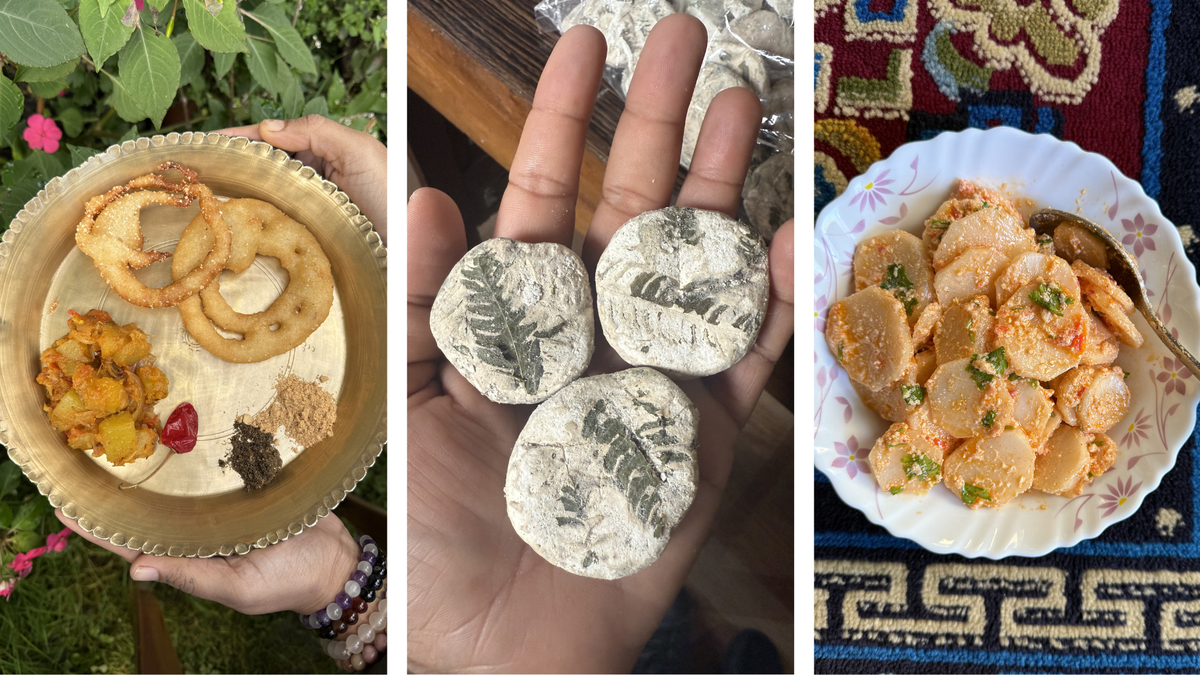You know how you sometimes hear of a place, and even before you have been there, you are already in love? I vividly remember hearing the name Gangtok in school, when we were learning capital cities, and knowing instinctively that I would find my way there some day. And I have been lucky to travel to Sikkim several times over the last decade.
Late last year, I co-hosted a Food Trail through Sikkim. Ten people — across age groups and countries, from India to Mexico and Columbia — all motivated by food and new experiences, travelled together for 10 days, eating and drinking their way through this tiny state that has an incredibly surprising diversity. We stayed with local families and lived their lives for a short while.
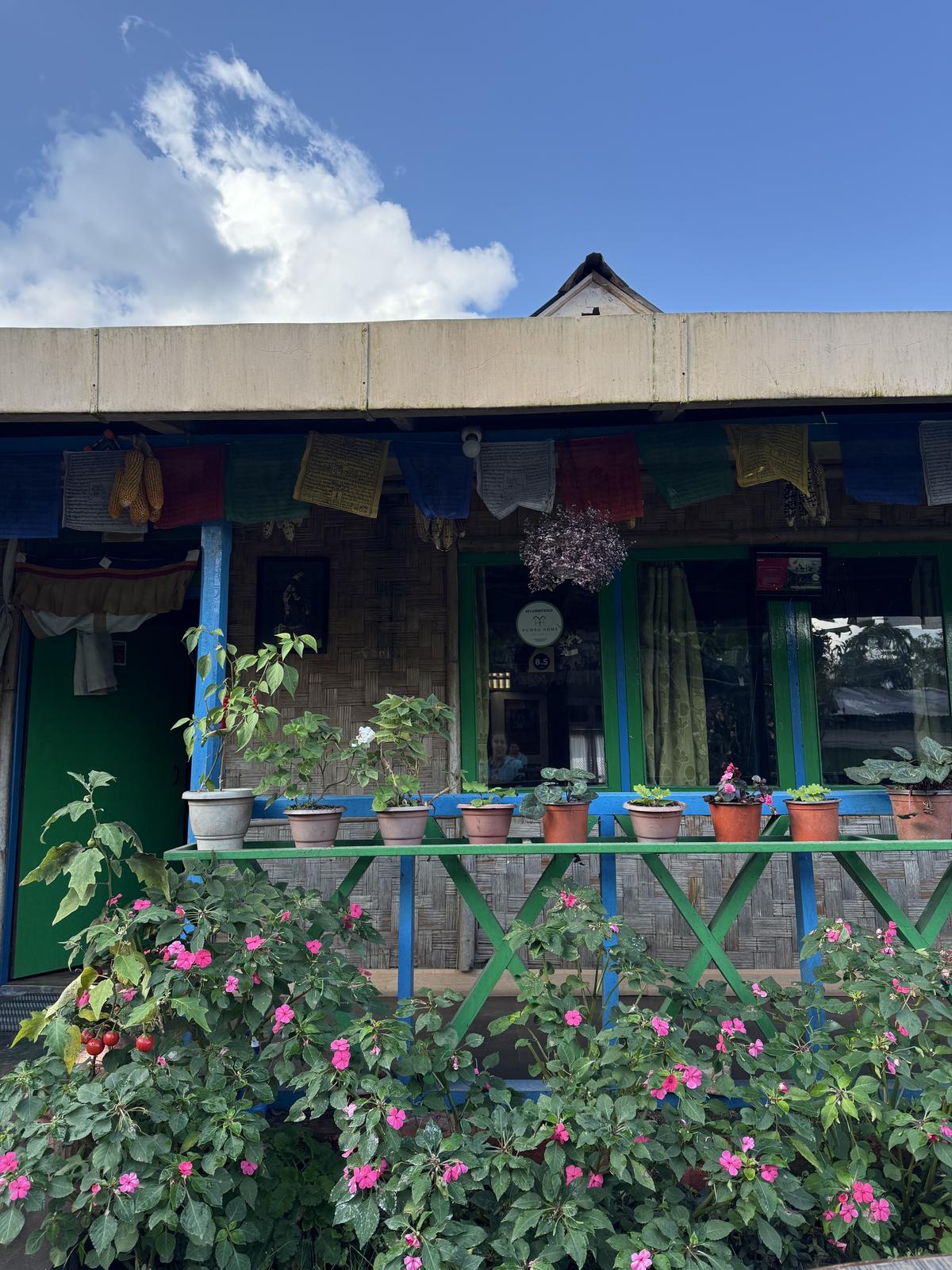
The family at our homestay in Darap welcomed us into their home and into their kitchen. We cooked along with them using many ingredients from their garden and the surrounding fields.
| Photo Credit:
Shalini Philip
I often say that food is our greatest common factor. It is such a personal and inherent part of a culture — one that sings of family, kinship, friendship, love and respect. It doesn’t matter if you don’t know a culture or its people; all it takes is one meal together for the beginnings of a relationship to be established. Someone willing to take the time and effort to make a meal for you. How can that not mean something?
The food trail started off with us as strangers travelling together, bound by a common interest. That changed quickly. Morning chai in our pyjamas, shared excitement over trying something new, and a willingness to experience a culture for what it is without any biases; it was special to be a part of such a group. I absolutely love that everyone stayed enthusiastic about everything. Only iskus (chayote/chow chow) as a vegetable for three meals in a row — no problem. Beef served by a host that two couldn’t eat — there’s always dalle and ghee. Help the hosts to cook the meal — always. Take a million photographs of every meal — most definitely. This is what makes for the best sort of travel.
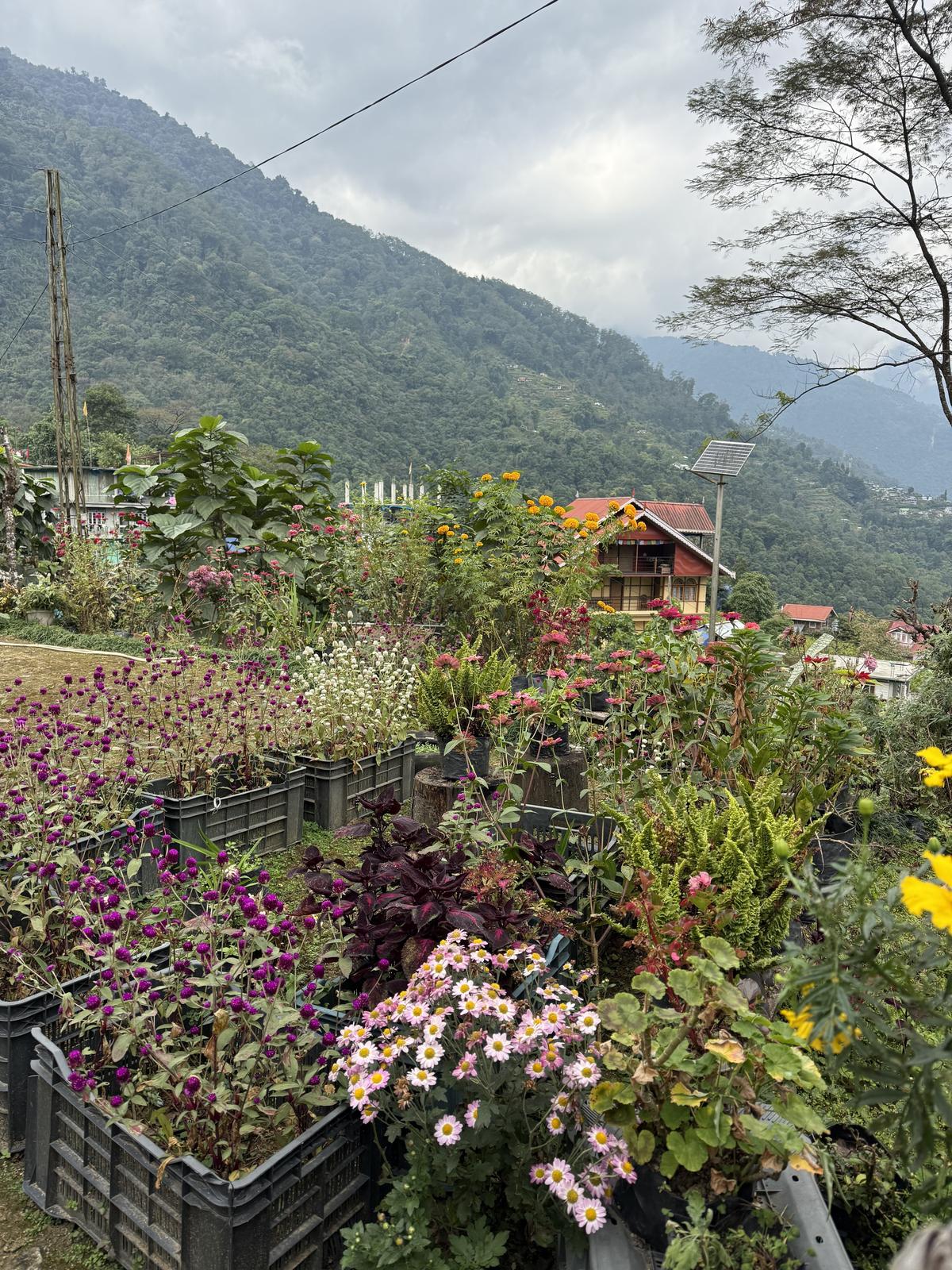
Every single household had crates, drums, boxes and pots of flowers in every conceivable colour.
| Photo Credit:
Shalini Philip
What follows is a photographic meander through those days.
A Nepali home in West Sikkim
The little village of Darap is not really on the tourist map. Nestled in the mountains, it is straight out of a story book with stone stairways leading up and through the village, fields of black cardamom, and gardens bursting with dahlias, marigolds, ferns and poinsettias.
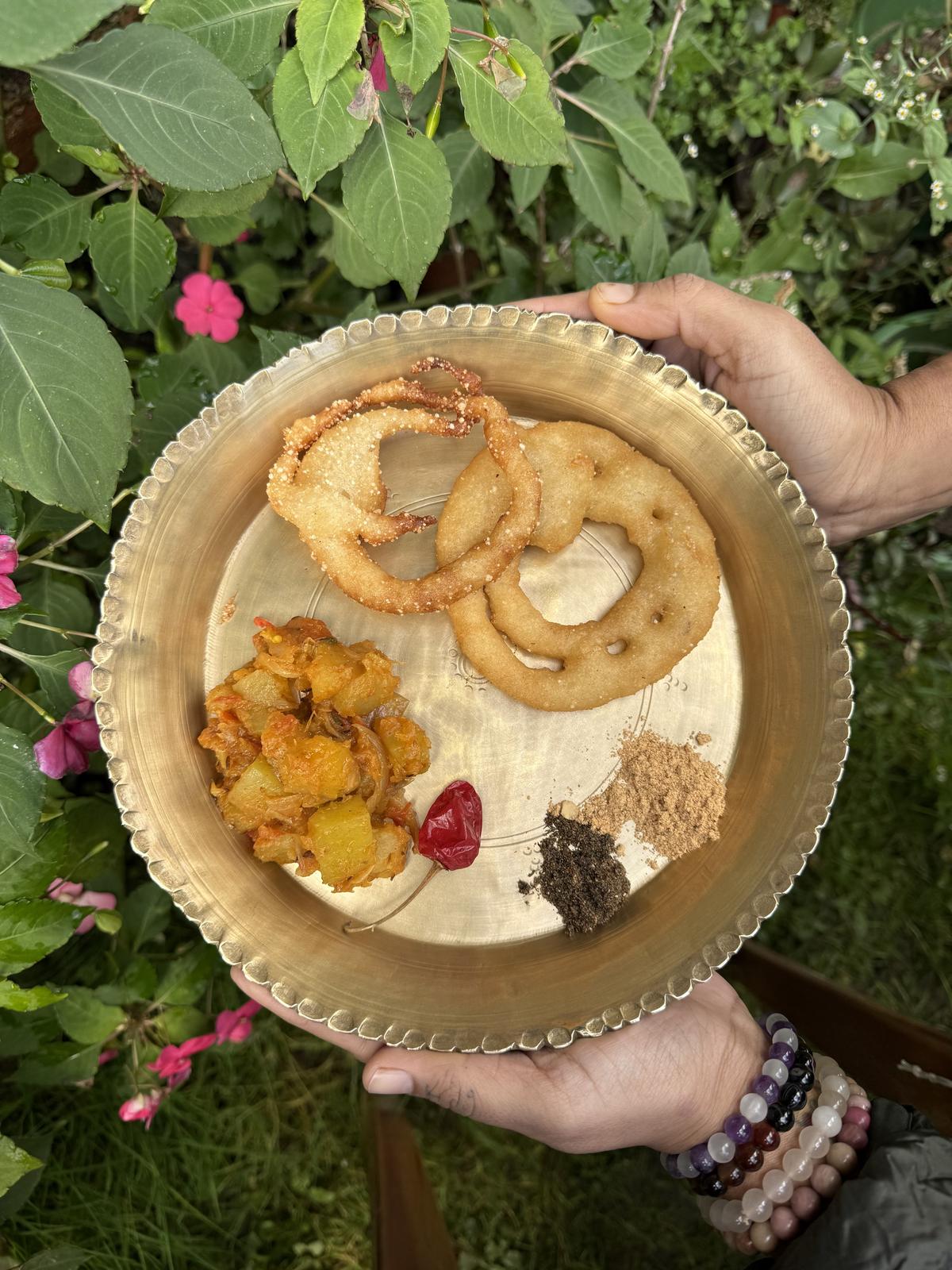
Sel roti, a Nepali classic, is served with iskus that grows wild. There are preserved or fresh dalle chillies on the table at every single meal.
| Photo Credit:
Shalini Philip
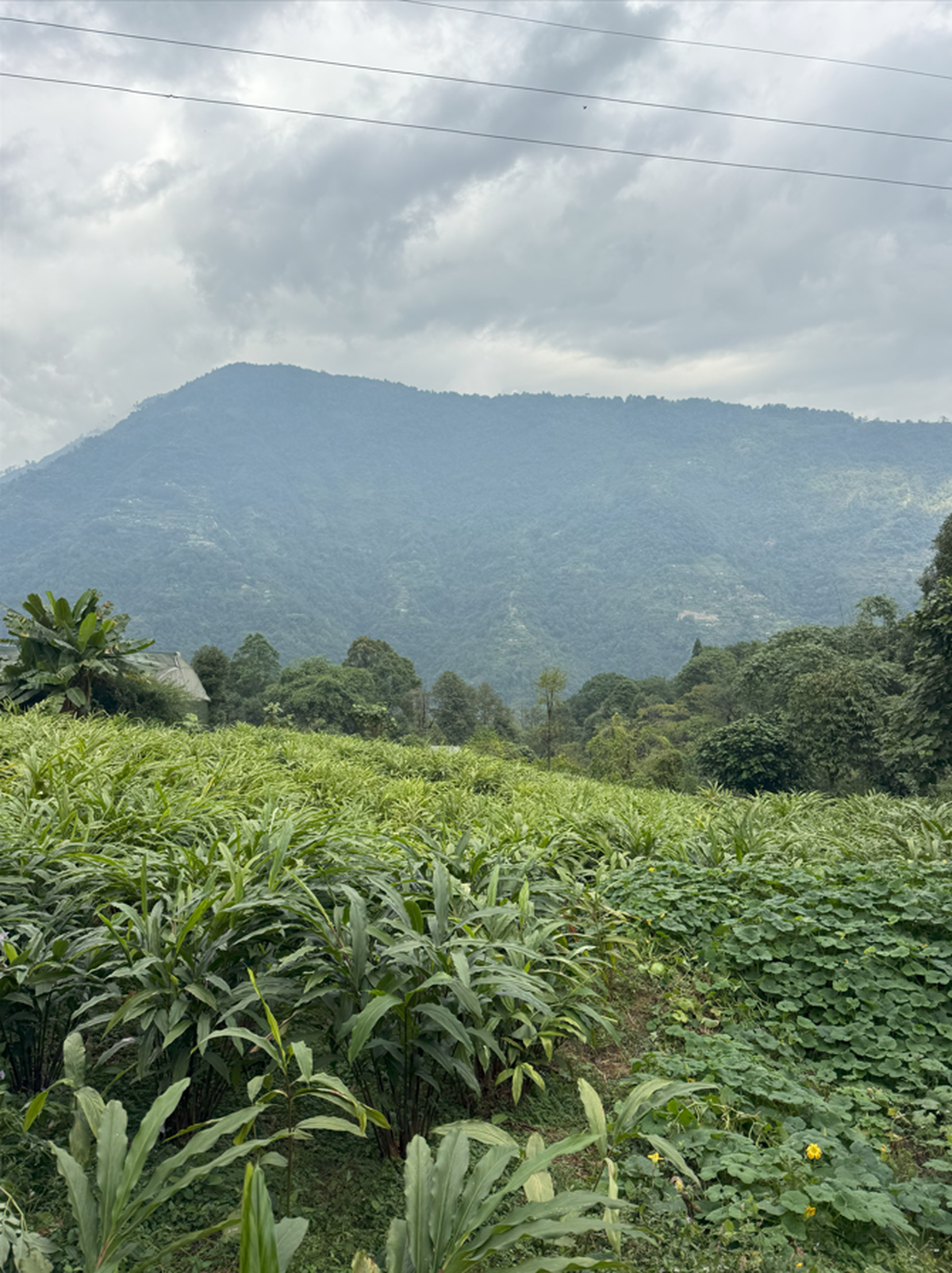
Fields of green cardamom on the mountainside of Darap. This is their cash crop.
| Photo Credit:
Shalini Philip
The Nepali families here are warm, welcoming and always happy to have you come into their kitchen and help with the daily meals. The food is served on gorgeous hammered brass plates that seem to make it taste even better. And, as is common in most villages, all meals are made from scratch, using local ingredients that change with the season. Late November gave us fiddlehead ferns, wild avocados, a small and precious quantity of nakima (a wild flower-vegetable) and lots of fresh chhurpi.
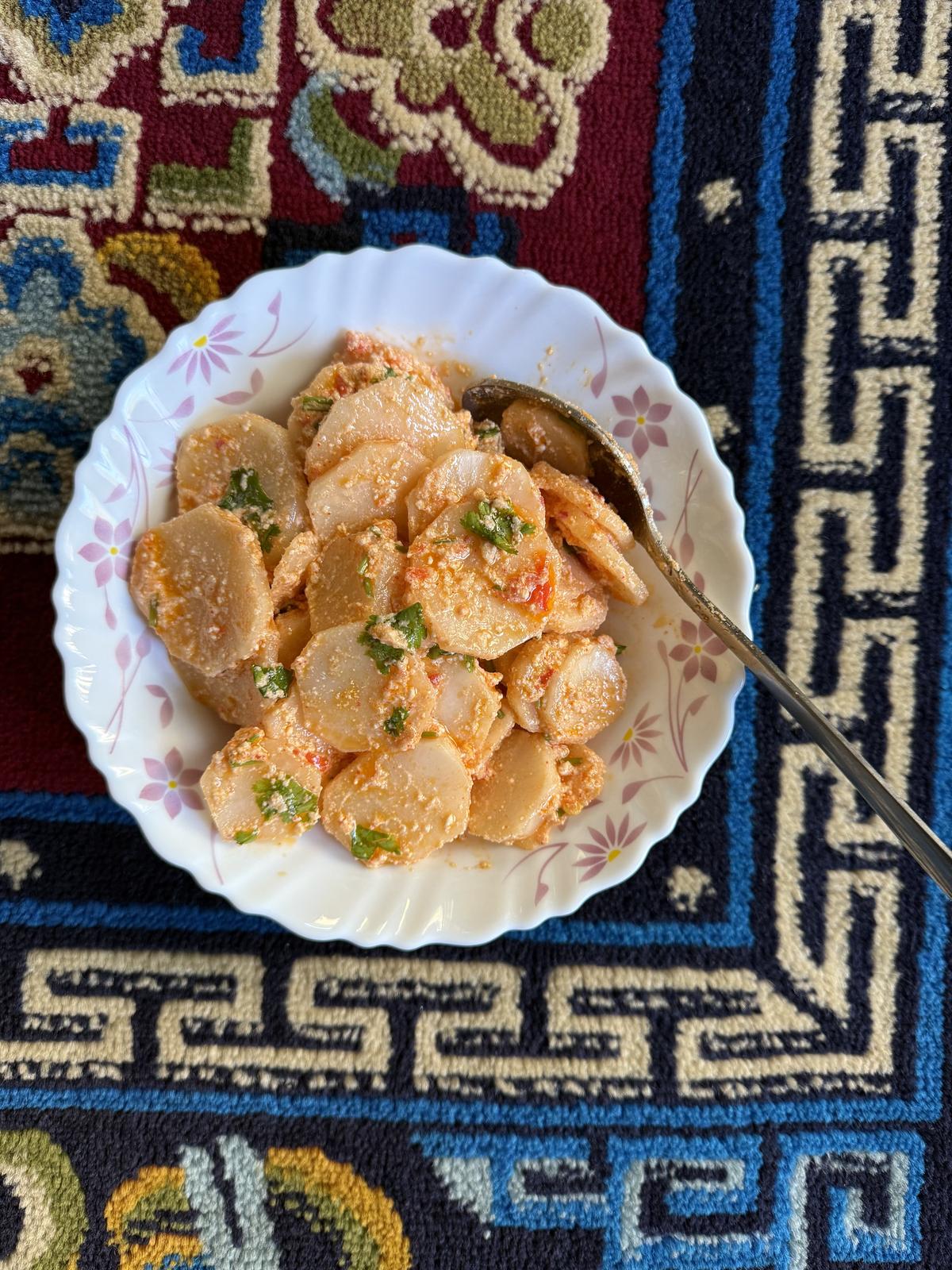
The food in a Nepali household is primarily vegetarian, with chicken offered at some meals. Dairy plays an important role, with fresh chhurpi made in every household. This radish salad with chhurpi and dalle chillies was the highlight of our meals in Darap.
| Photo Credit:
Shalini Philip
South Sikkim and the Bhutias
Several hours down a bumpy road took us to another part of Sikkim — the south, to a Bhutia home. Of Tibetan origin, these households make the kitchen the central room of their homes. Wood-fired cooking, smoking racks hung from the ceiling, and meals that involve the entire family; I have a special place in my heart for the little settlement of Kewsing that offers spectacular views of the mighty Kangchenjunga.
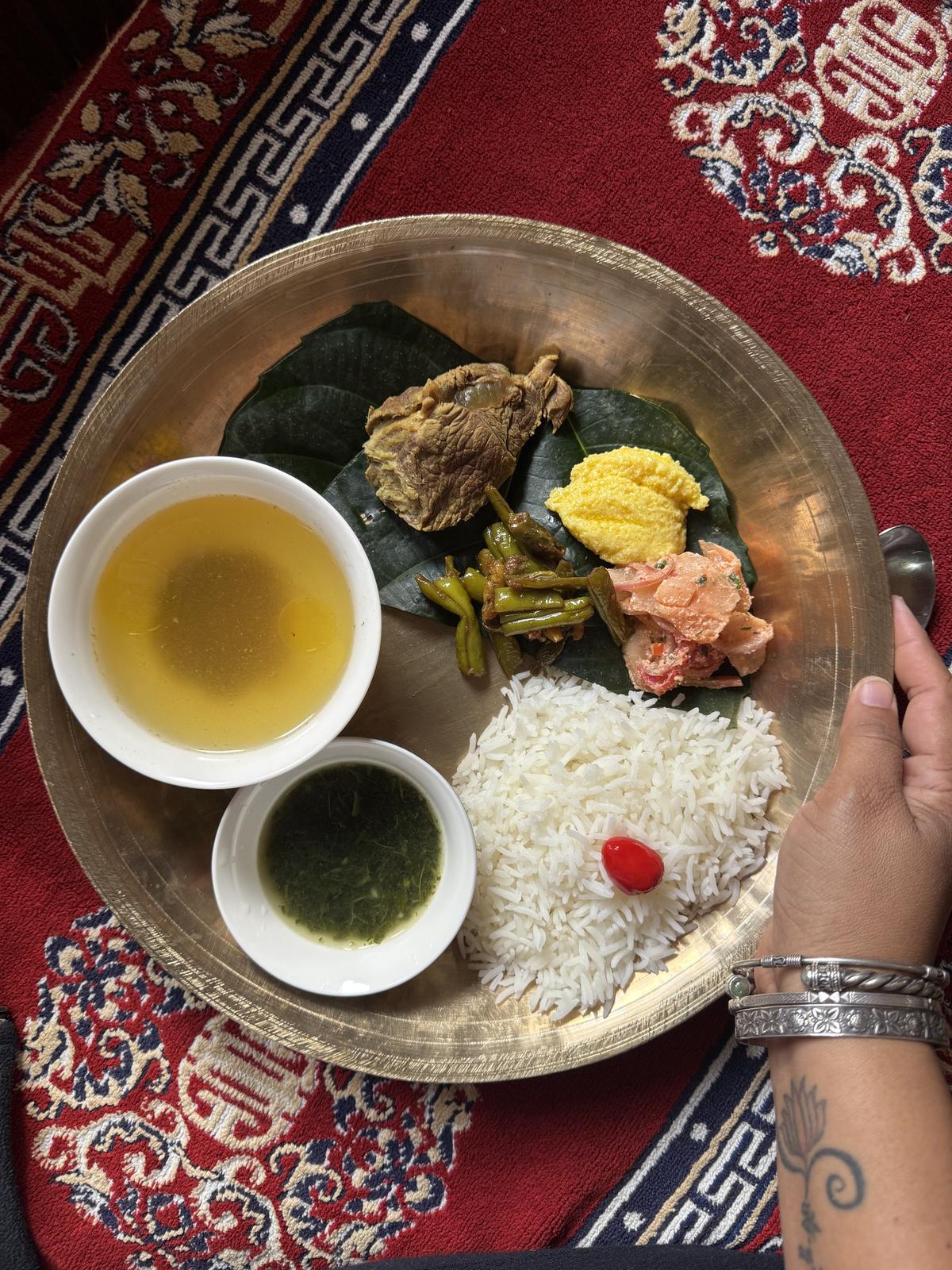
Beef and pork feature on the plates in a Bhutia household. Broth, stinging nettle soup, the now familiar radish salad, and a spoonful of rich chhurpi, which is always freshly churned. And a dalle chilli, of course!
| Photo Credit:
Shalini Philip

Tingmo is a steamed bread, often eaten at breakfast with a side of vegetable or meat.
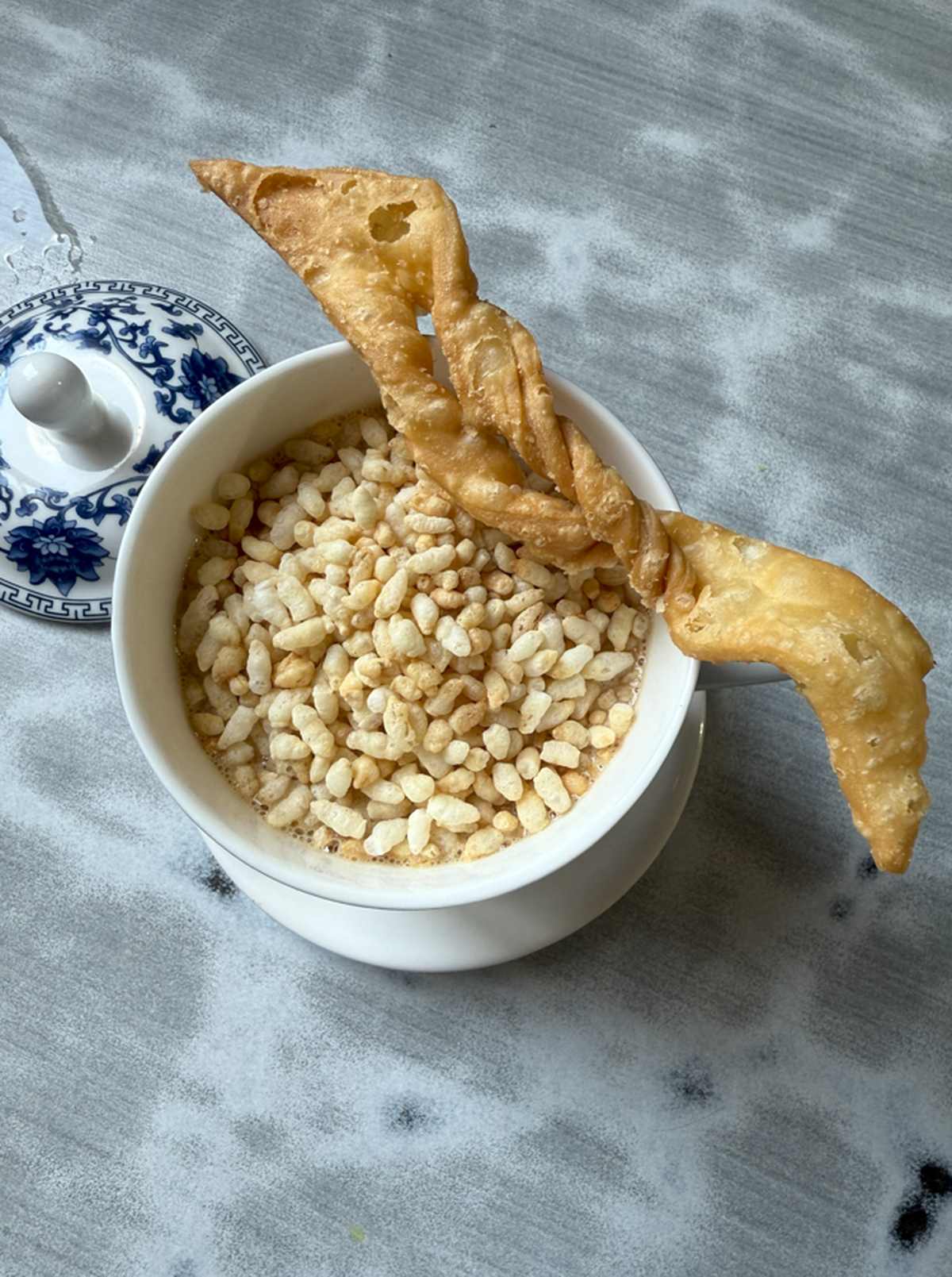
Endless cups of tea are drunk while one goes about everyday tasks. I always enjoy the chai because it comes with a chance to sit down and talk. Seen here is chai with puffed rice and khabsey, a lightly sweetened, fried snack.
With no taboos around pork and beef, the Bhutia kitchens offered us an opportunity to sample and make out-of-the-ordinary things such as blood sausages, bone broth soup, and slabs of smoked pork. The meats are mildly seasoned, to let the taste of the meat itself shine through.

One of the many meals that involves the entire family in its preparation is momos. Served with a smashing dalle chutney.
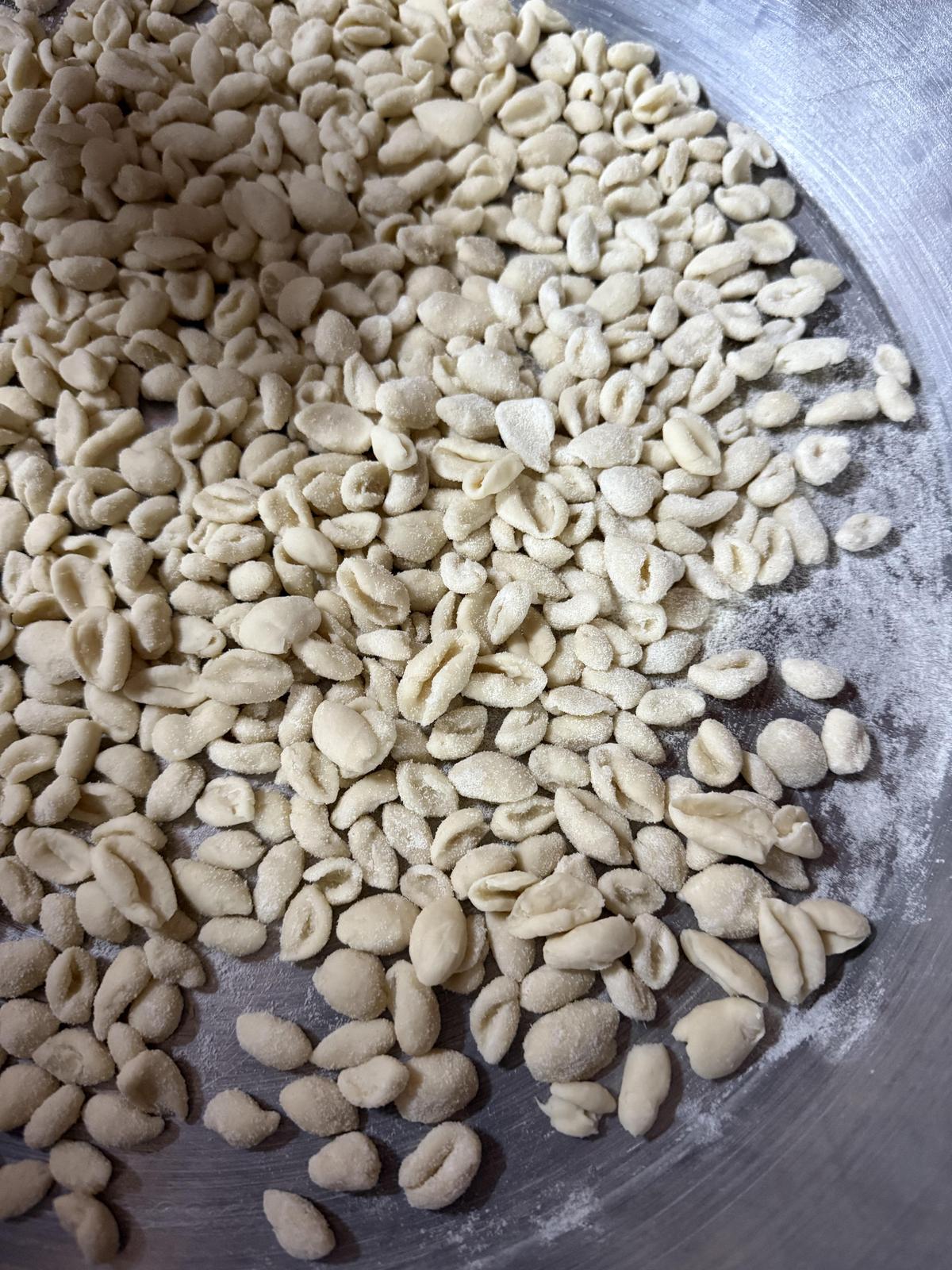
Hand-rolled pasta called cowri (shell) are made for breakfast to go along with a hearty beef broth.
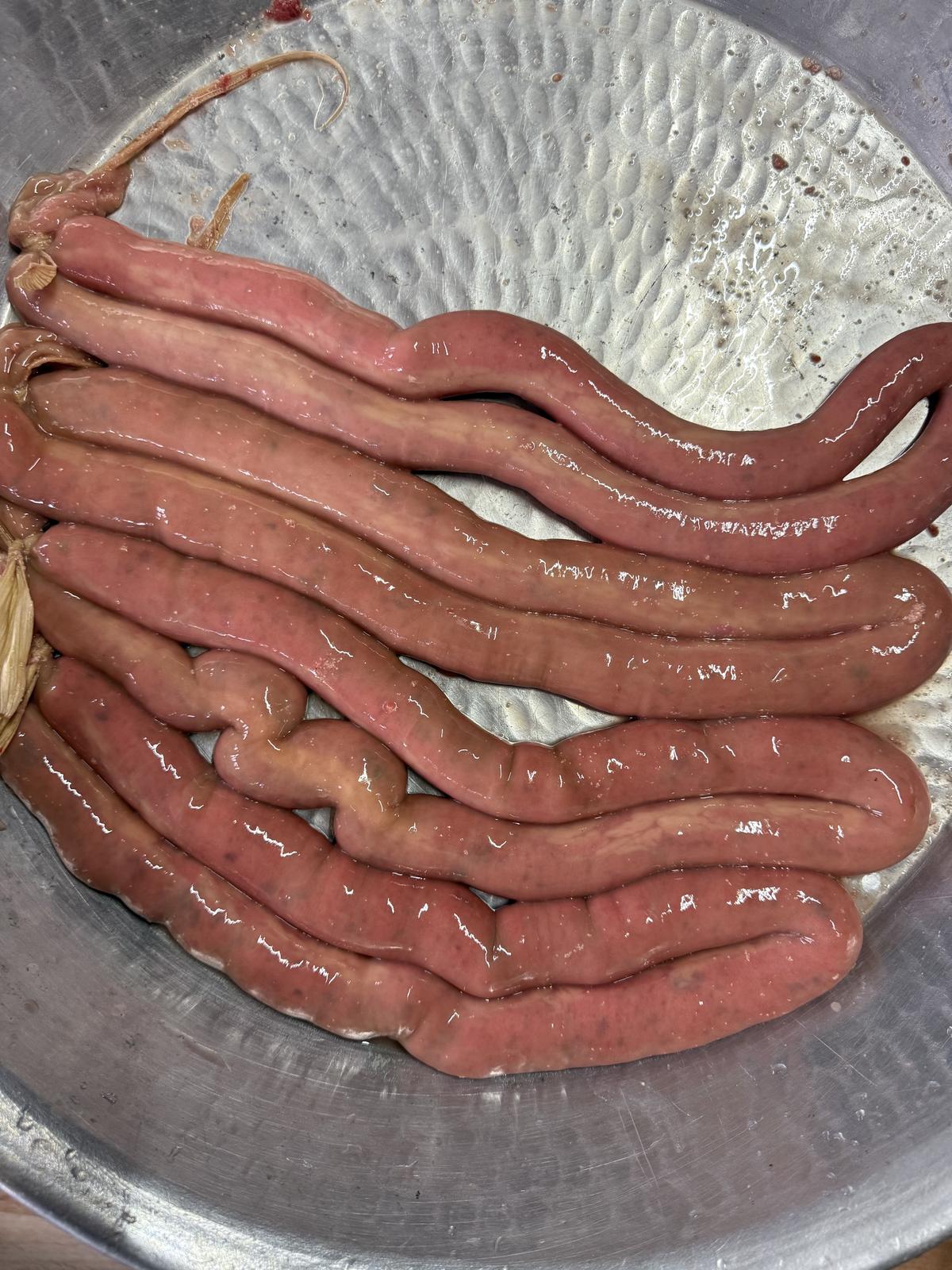
Nose to tail is the way things work. And so, blood sausages — a classic in a Bhutia kitchen.
Chang and the Lepchas in North Sikkim
The most magical of all places in Sikkim (and mind you, there are many) is Dzongu. Home to the original inhabitants of the state, the Lepchas, it is nature at its most abundant. Crystal blue streams, skies that match, and pathways that lead through beautiful forests.

The natural yeast starter used to make the local alcohol chang. The plants are collected in the forest and set into these rice cakes.
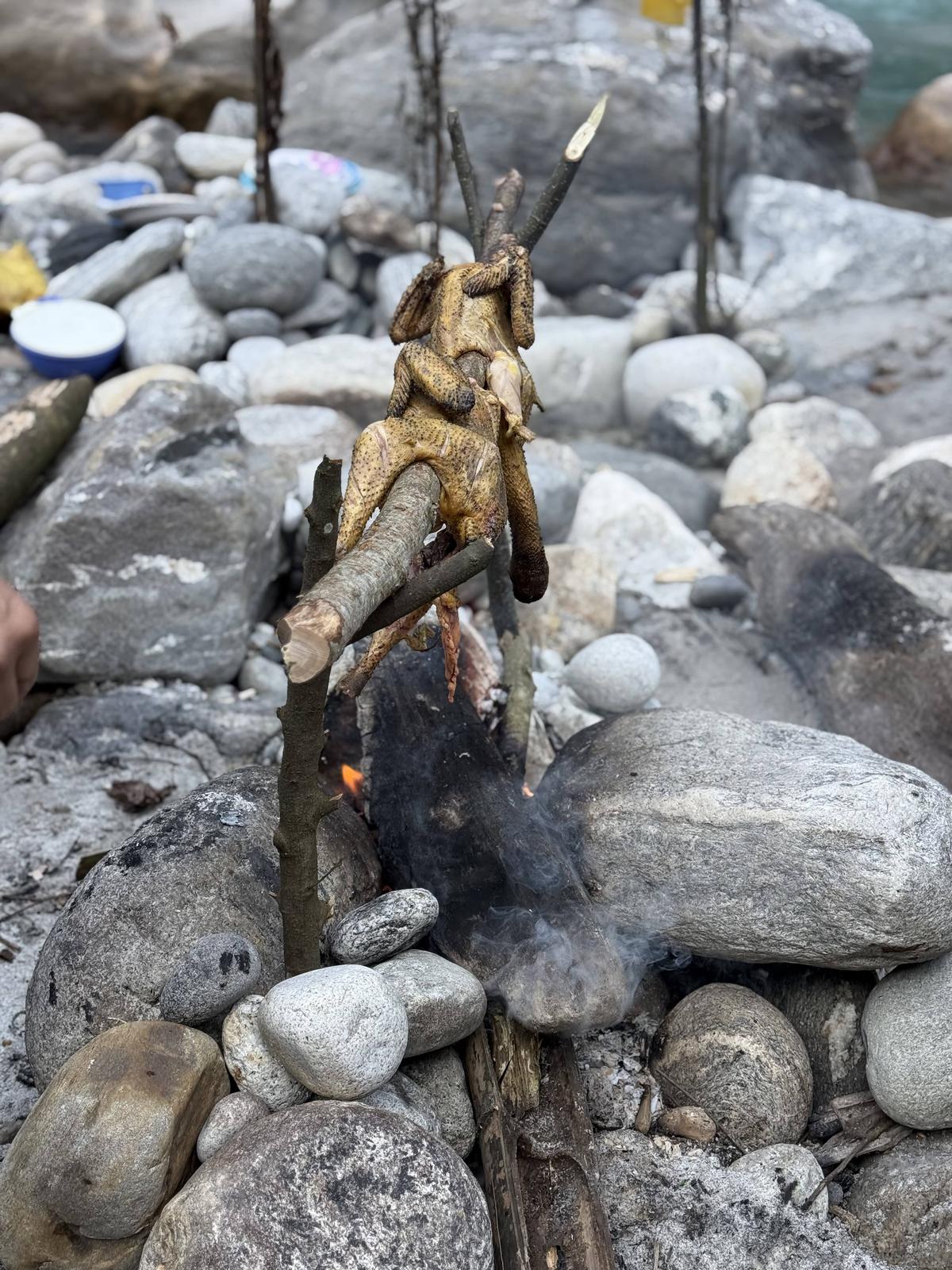
A picnic by the river in Dzongu with whole roast chicken cooked over a rustic rotisserie made of sticks.
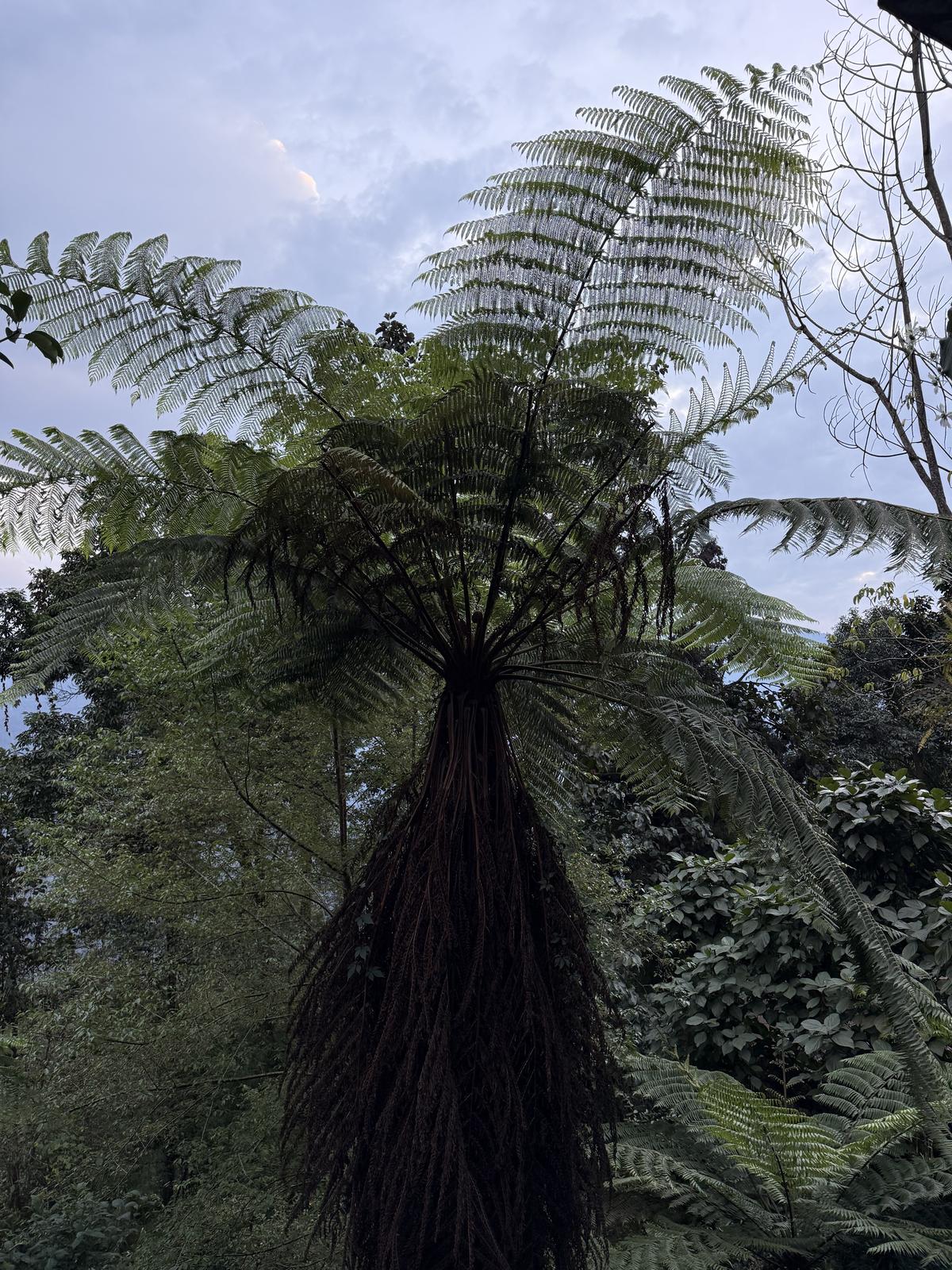
The giant tree ferns in the forests of Dzongu.

Cooking pork in bamboo segments over an open fire. River stones were used to close the tops and trap the heat.
The Lepchas are known to make the best chang, a local drink made by fermenting rice or ragi grains. It is cool, light and refreshing, and can really pack a punch because one tends to drink a fair amount rather easily.
One night in Gangtok
The ideal end of many days of slow village life is to get to Gangtok and enjoy the bustle of the capital that is bursting with produce. As always, I have a list. Places to eat at — there was no way we were leaving without enjoying some meaty shaphalay (bread stuffed with meat), more momos, laphing (a cold noodle dish) and the now famous dalle fries — and more importantly, shops in the market to buy produce and take home. And as always, I know I will buy an extra bag or three to pack all the things I simply must have.
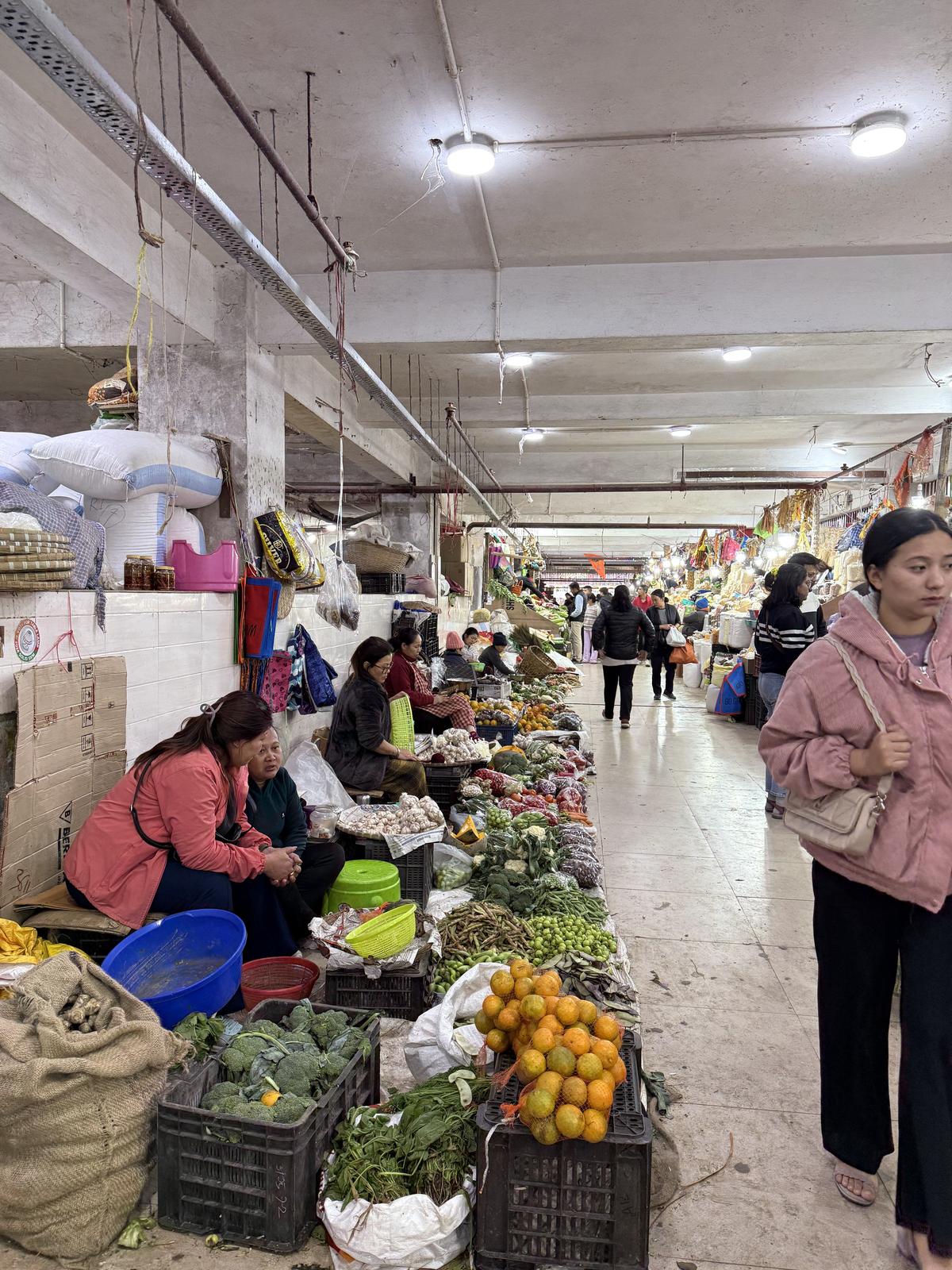
Bara Bazaar, with its mountains of fresh, dried, fermented and preserved produce.
The day after I returned, as I unpacked my bags, I couldn’t help but liken the food with the people of Sikkim: simple yet so unique, warm and immediately likeable, colourful and quite unforgettable. With every visit to this beautiful mountain state in the eastern Himalayas I realise all over again how apt the Sikkimese name for this place is — Demazong. Hidden paradise.
Dalle and chhurpi in my suitcase
Bara Bazaar, as the main market is known, blows open on the weekends with people coming from all the smaller towns and villages to sell their produce. Organic by default, it is fascinating to walk through the mountains of fresh, dried, fermented and preserved produce sold by fashionably dressed women who seem to constantly be snacking while they go about business.
I picked up bouquets of chimping (hogweed), a spice that bring a citrusy tang to chutneys, hard chhurpi (fermented cottage cheese) that one can chew on for hours, bitter lemons, dried dalle chillies, black cardamom, and yeast starter for the local alcohol (because the cakes are just so pretty).
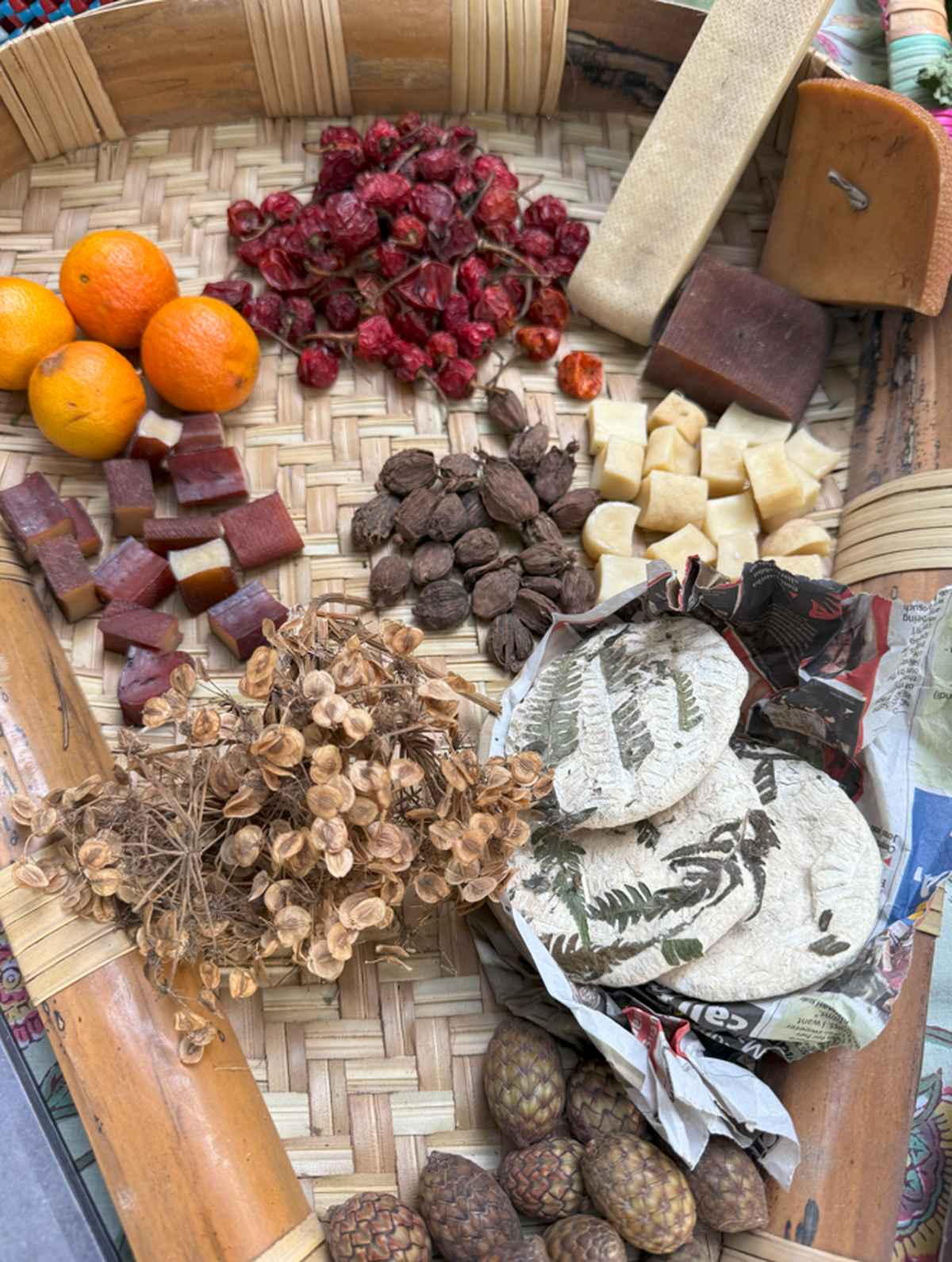
Chimping, hard chhurpi, bitter lemons that masquerade as oranges, dried dalle chillies, more chhurpi in all shapes and sizes, some black cardamom, yeast starters, and a fruit that I am yet to identify.
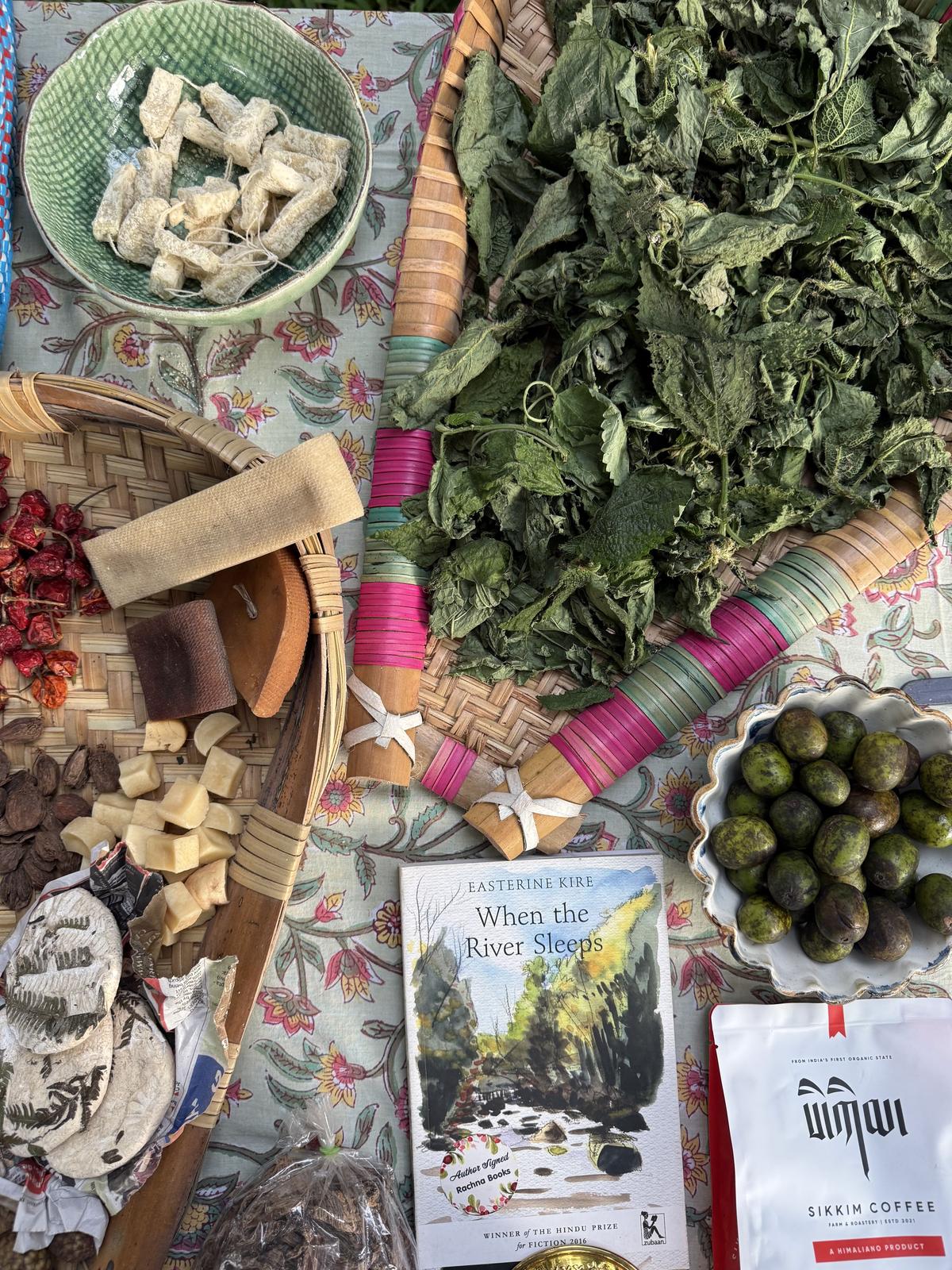
More chhurpi, stinging nettle, hog plums, Sikkimese coffee, and books from Rachna Books.
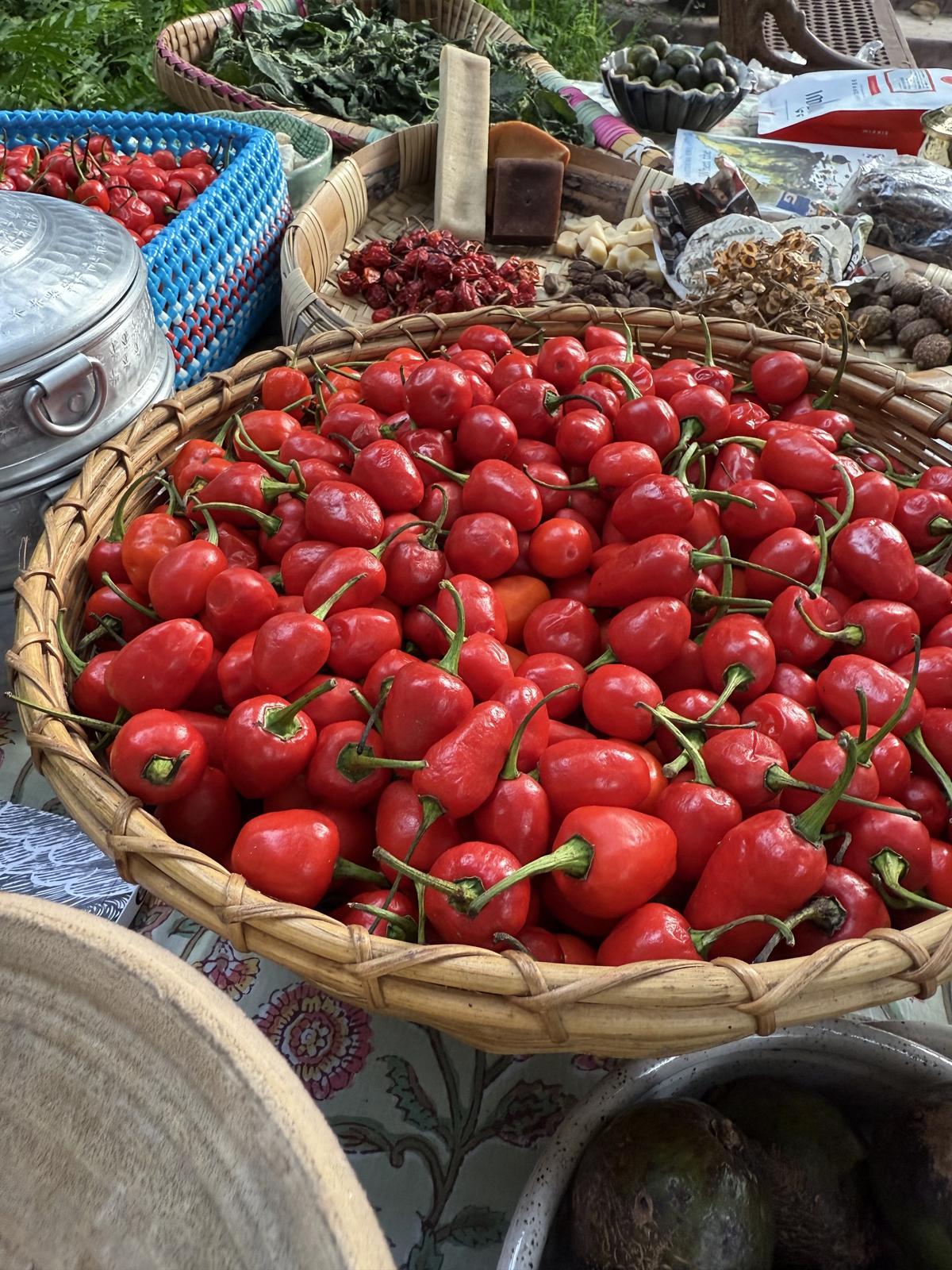
I love the piles of dalle chillies one can find in markets across Sikkim, and the numerous bottles of preserved, fresh or dried chillies in every kitchen. No meal is complete without a dalle or three smashed into the rice, with a dollop of homemade ghee.
I also packed stinging nettle that can be used in soups, hog plums to make a pickle, Sikkimese coffee, which seems to be all the rage in Gangtok, and books from my favourite bookstore in the city, Rachna Books.
The writer is co-owner of The Farm in Chennai.
Published – April 10, 2025 07:21 pm IST

